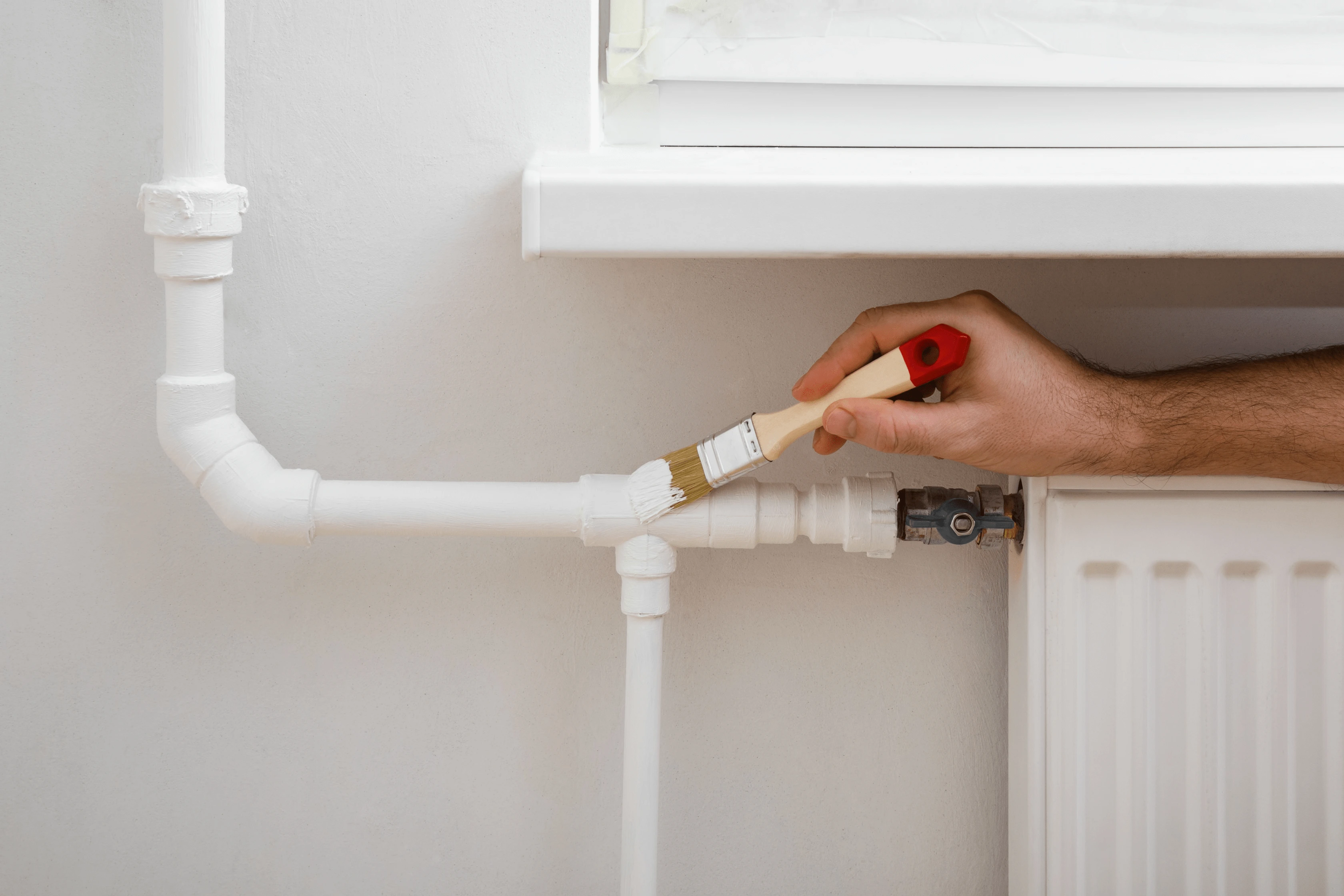As important as radiator pipes are for the function of your radiator, they can look a bit ugly, throwing off the look of your room.
The solution: paint them.
In this Bathroom Takeaway guide, we’ll walk you through step-by-step what you need to do to paint your radiator pipes in any colour you choose.
What Paint Should You Use?
When working out what paint to use on radiator pipes, it’s essential that it’s fit for purpose. Don’t just use any random paint, as it will likely crack and peel off overtime.
We suggest opting for a high-quality radiator paint that provides excellent coverage and can withstand the heat of the pipes. When selecting the best paint for radiator pipes, look for the following qualities:
- Heat Resistant
- Hard Enamel Paint
- Cover First Time
How Do You Remove Paint From Radiators?
When stripping paint from pipework, be mindful of using ammonia and acetone as the two main chemicals.
These solutions can react with metals like cast iron and copper, raising the pH level to stabilise emulsions. This process loosens the paint's bond, allowing it to easily peel away from the surface.
How To Paint Your Radiator Pipes
It may sound like a big effort having to paint radiator pipes, but rest assured it’s actually quite an easy task:
- Firstly, turn off your radiators
- Clean the pipes with degreasing soap to ensure a smooth paint application
- Scrub the pipes with wire wool so the paint has a good surface to adhere to
- Give it a final wipe over to remove dust or filings
- Once done, place a sheet below the pipe and brush away with your chosen paint colour

Is there an alternative to painting radiator pipes?
If you are not wanting to paint your radiators then there is another option still available beyond the well known skirting boards solution.
The other option, apart from paint, would be pipe covers which are a great alternative to the standard skirting boards. Pipe covers are used to conceal exposed plumbing installed within a building, creating a more streamlined appearance.
Radiator pipe covers come in a variety of options to accommodate differently mounted pipes, whether secured with clips or along skirting boards, and can navigate around various angles and joints throughout a room.
FAQ’s
Can You Paint Radiator Pipes With Gloss?
YES! Gloss paint's durable, glossy finish makes it well suited for painting radiators.
Can You Paint Copper Radiator Pipes?
Yes, but it is not something we’d recommend.To seamlessly integrate the pipes with your radiator and overall home design, it is generally advisable to conceal them from view where possible.
Can You Paint Radiator Pipes With Emulsion?
Yes you can, you can paint copper pipes with an emulsion paint, but it is not ideal overtime. Ideally, choose a paint specifically designed for high heat surfaces. While standard emulsion paint may work initially, it will likely crack and peel over time.
To ensure a durable, long-lasting finish, select a paint rated for radiator and high-heat applications.
What Paint To Use On Copper Radiator Pipes?
For copper pipes, you can use a standard primer and top coat, such as a satin or gloss finish, instead of oil-based paint. This approach will work just as well and be longer lasting. Radiator paint is likely the best option, as some paints may discolour over time due to the heat.
How To Paint Behind Radiator Pipes
If you are unsure how to paint behind radiator pipes then we recommend you use a long-handled radiator brush with an angled head.
The angled brush head enables you to reach down and fully coat the surface behind your radiator without accidentally splattering paint on the walls.






















